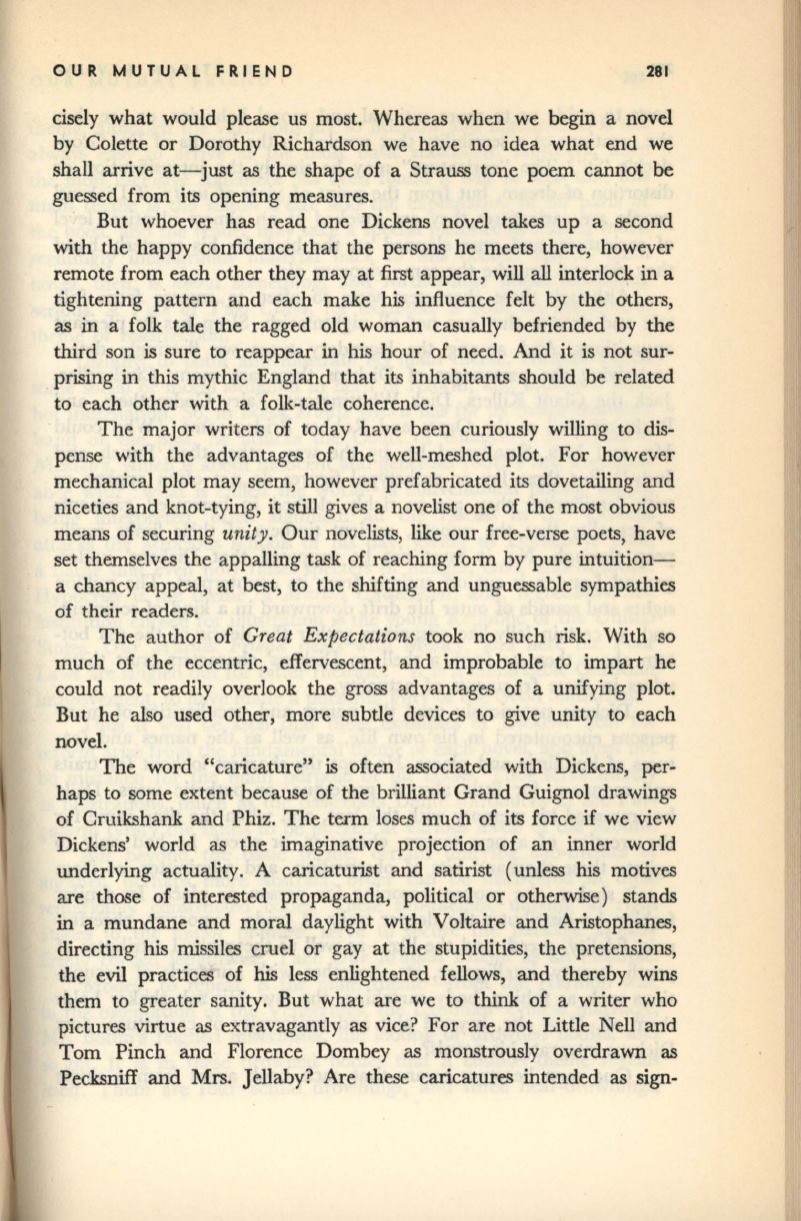
OUR MUTUAL FRIEND
281
cisely what would please us most. Whereas when we begin a novel
by Colette or Dorothy Richardson we have no idea what end we
shall arrive at-just as the shape of a Strauss tone poem cannot be
guessed from its opening measures.
But whoever has read one Dickens novel takes up a second
with the happy confidence that the persons he meets there, however
remote from each other they may at first appear, will
all
interlock in a
tightening pattern and each make his influence felt by the others,
as in a folk tale the ragged old woman casually befriended by the
third son is sure to reappear in his hour of need. And it is not sur–
prising in this mythic England that its inhabitants should be related
to each other with a folk-tale coherence.
The major writers of today have been curiously willing to dis–
pense with the advantages of the well-meshed plot. For however
mechanical plot may seem, however prefabricated its dovetailing and
niceties and knot-tying, it still gives a novelist one of the most obvious
means of securing
unity.
Our novelists, like our free-verse poets, have
set themselves the appalling task of reaching form by pure intuition–
a chancy appeal, at best, to the shifting and unguessable sympathies
of their readers.
The author of
Great Expectations
took no such risk. With so
much of the eccentric, effervescent, and improbable to impart he
could not readily overlook the gross advantages of a unifying plot.
But he also used other, more subtle devices to give unity to each
novel.
The word "caricature" is often associated with Dickens, per–
haps to some extent because of the brilliant Grand Guignol drawings
of Cruikshank and Phiz. The term loses much of its force if we view
Dickens' world as the imaginative projection of an inner world
underlying actuality. A caricaturist and satirist (unless his motives
are those of interested propaganda, political or otherwise) stands
in a mundane and moral daylight with Voltaire and Aristophanes,
directing
his
missiles cruel or gay at the stupidities, the pretensions,
the evil practices of
his
less enlightened fellows, and thereby wins
them to greater sanity. But what are we to think of a writer who
pictures virtue as extravagantly as vice? For are not Little Nell and
Tom Pinch and Florence Dombey as monstrously overdrawn as
Pecksniff and Mrs.
J
ellaby? Are these caricatures intended as sign-


